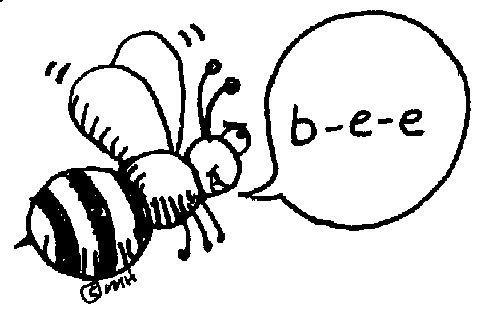
The Big 5 A teacher's guide to literacy in the classroom
The Ins and Outs of Phonics
Phonics refers to the relationship between letters in written language (graphemes) and the individual sounds of speech (phonemes). It is both a knowledge and a skill; that is, there are rules and relationships that students must learn and know, and then apply this knowledge to automatically process words.
Why should my students learn phonics?
Mastering phonemic awareness helped your students make sense of the very smallest units of language. Phonics is where they start to put those units back together to form words. Phonics skills give students the ability to encode (spell) and decode (read) words, even if they have never seen them before. Understanding phonics is often referred to as 'breaking the code' because it opens up the world of reading and writing in a whole new way.
Research tells us that students who are successful at phonics go on to be successful in reading, writing, and spelling throughout their years of schooling, and improves comprehension and some oral reading skills.


How should my students learn phonics?
For many educators, mentioning phonics brings to mind a complicated and ongoing debate over the best methods to teach reading. Proponents of a 'whole language' approach suggest that students should learn words as whole pieces of language, remember the look of a word and associate it's meaning, and discourages the breakdown of words into letters and letter combinations. Whole language supporters argue that the rules governing the English language are far too inconsistent to use as an approach to reading. However, a great deal of research suggests that a systematic phonics program yields better a more significant results than other approaches or no instruction at all.
Explicit phonics instruction should occur for two years in the early elementary years (K - 1st grade) and a scientifically-based program should be followed which will cover material such as consonant and vowel rules and relationships, syllable patterns, high frequency words, and decoding strategies. Popular phonics programs include Lively Letters (Telian & Castagnozzi) and Fundations (Wilson).
***Though phonics stresses learning to read by recognizing letters and letter patterns, there is a set of common words known as high frequency words which make up about 65% of written material (the, of, and, to, was, one, etc.). A large percentage of these words do not follow the phonics rules that are taught to students and must be memorized as whole words. Automatic recognition of high frequency words allows students to comprehend more information at a faster rate.

What can I use in the classroom to help my students with phonics?
• Cube Words: students roll 3-6 (depending on ability) letter cubes and make as many words as possible.
• Word Ladders: an activity asking students to add, delete, or change letters in order to make new words, directed by a series of clues.
• Flip Books: a rime is written on the right side of a strip of paper. Consonants, consonant blends and consonant digraphs are written on smaller cards which can be flipped through on the left to create various words.
• Cloze Passages: Students are given a short passage with words missing and asked to fill in these spaces using clues from the rest of the text.
• Word Walls: A whole-class resource in which words are displayed for all to see. Words may be organized by first letter, word families, unit vocabulary, etc.